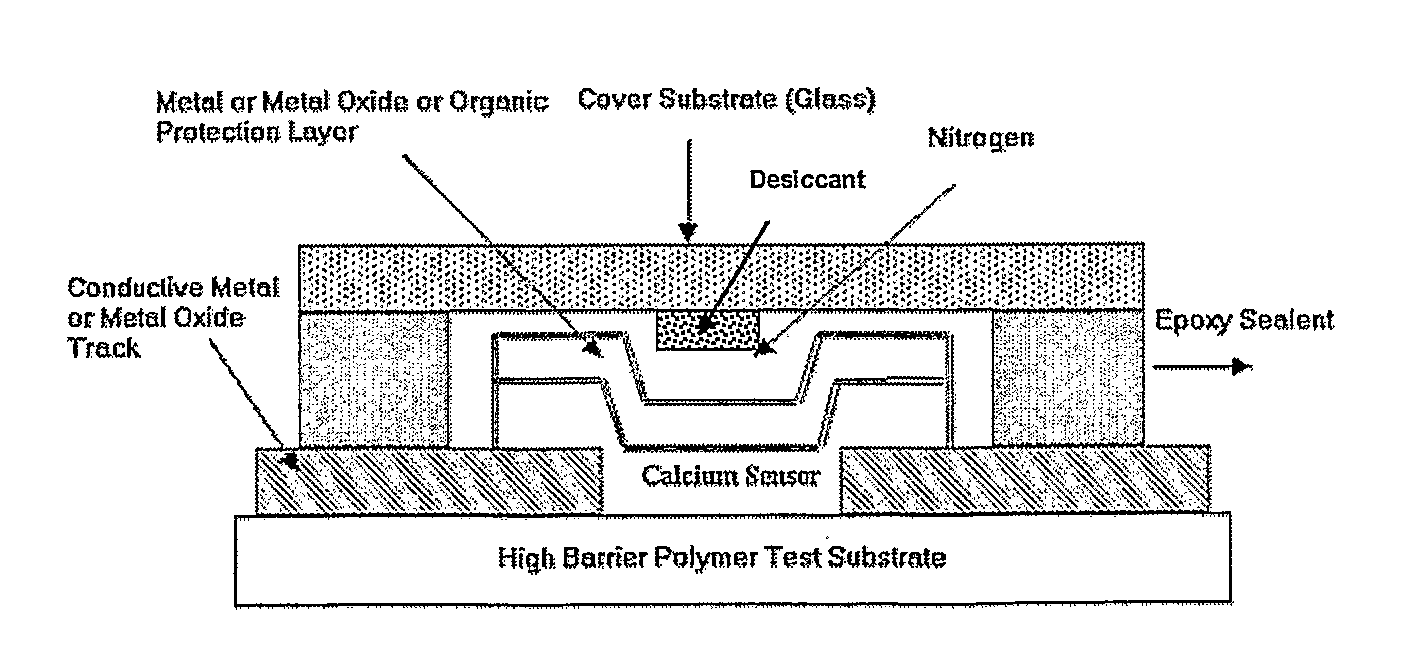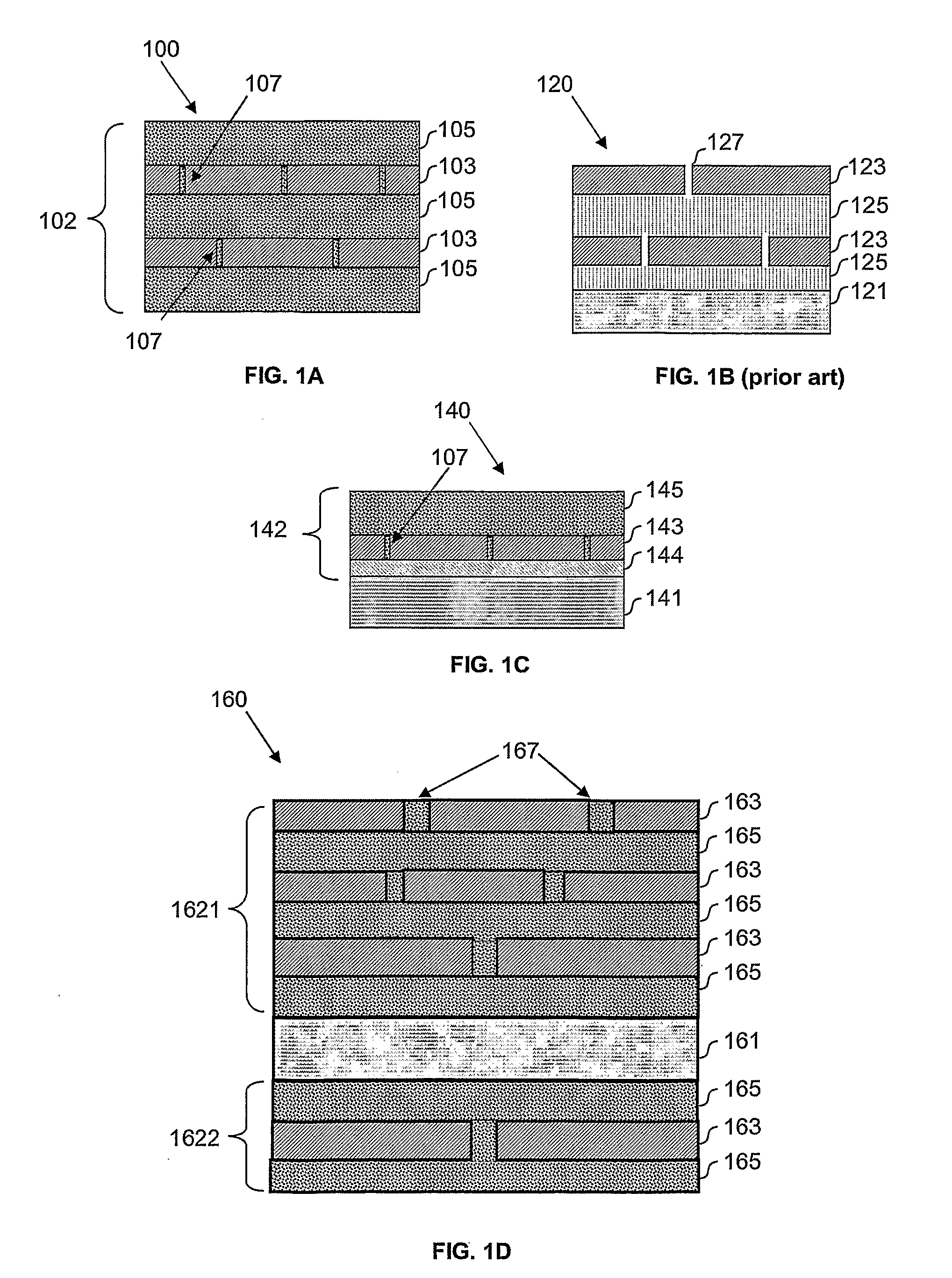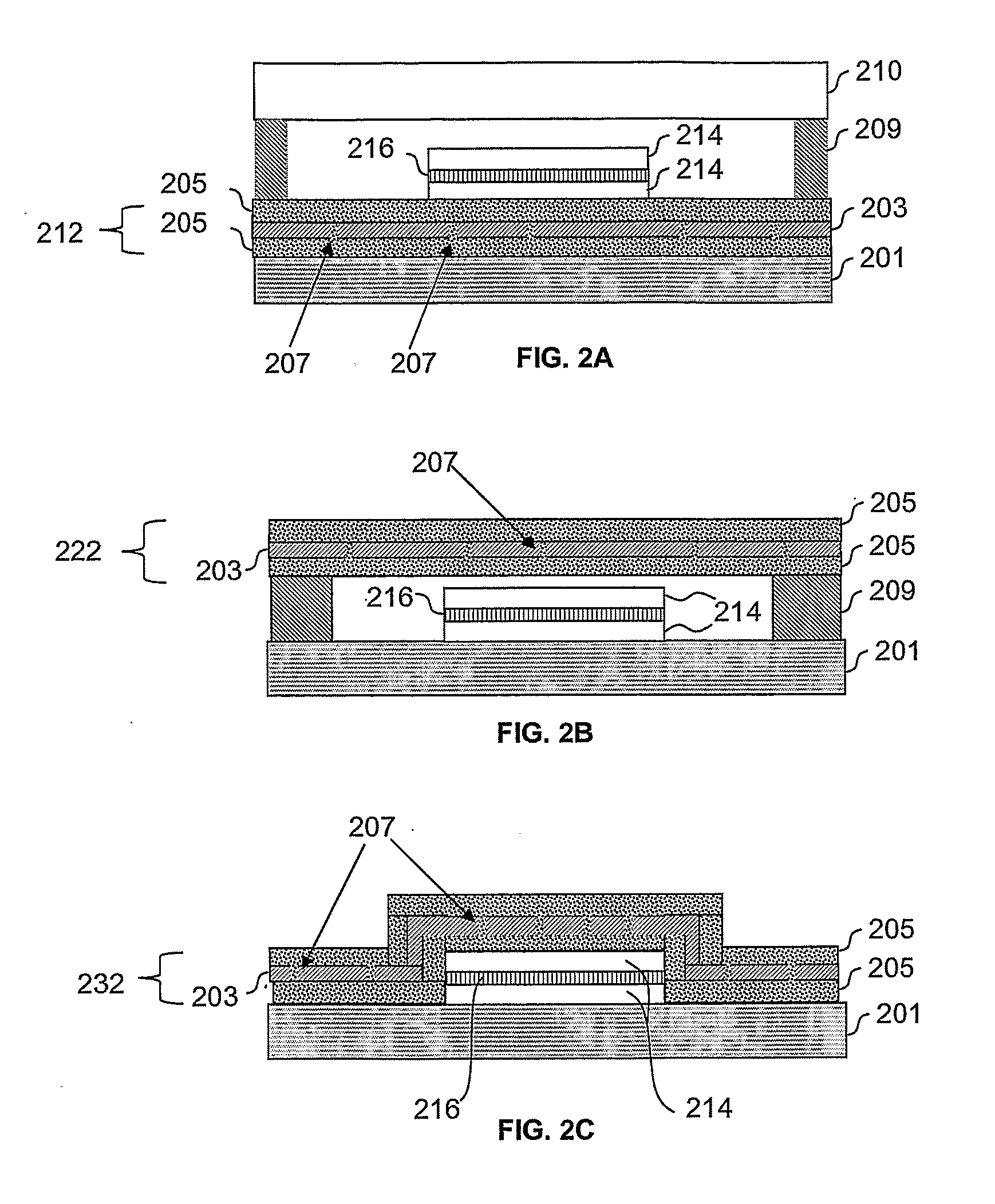Nanoparticulate encapsulation barrier stack
- Summary
- Abstract
- Description
- Claims
- Application Information
AI Technical Summary
Benefits of technology
Problems solved by technology
Method used
Image
Examples
example 1
Fabrication and Characterisation of Encapsulation Barrier Stacks With Sealing Layer Comprising Metal Oxide Nanoparticles
a) Synthesis of Encapsulation Barrier Stacks A, B and C
[0082]As an illustrative example, three different encapsulation barrier stacks each comprising different nanoparticles in the sealing layer were fabricated. Each of the encapsulation barrier stacks were made according to the following specification:
Stack A
[0083]1. Base substrate—Polycarbonate film (188 μm thick)[0084]2. Planarizing layer—Plain acrylic polymer[0085]3. First Barrier layer—ITO (indium tin oxide)[0086]4. Sealing layer—aluminium oxide nanoparticle[0087]5. Second barrier layer—ITO
Stack B
[0088]1. Base substrate—Polycarbonate film (188 μm thick)[0089]2. Planarizing layer—Plain acrylic polymer[0090]3. First Barrier layer—ITO[0091]4. Sealing layer—titanium oxide nanoparticle[0092]5. Second barrier layer—ITO
Stack C
[0093]1. Base polymer Substrate—Polycarbonate film (188 μm thick)[0094]2. Planarizing lay...
example 2
Fabrication and Characterisation of Encapsulation Barrier Stacks With Sealing Layer Comprising Carbon Nanotubes
[0129]The following encapsulation barrier stacks with differing carbon nanotube compositions in the sealing layers were prepared:
Stack E
[0130]1. Polycarbonate (188 μm) as base substrate[0131]2. ITO as barrier layer[0132]3. Nanostructured sealing layer with MCNTs at 0.006% concentration as sealing layer
Stack F
[0133]1. Polycarbonate (188 μm) as base substrate[0134]2. ITO as barrier layer[0135]3. Nanostructured sealing layer with MCNTs at 0.05% concentration as sealing layer
[0136]Pre-treated10 nm diameter multiwalled nanotubes (hereinafter ‘MCNT’) were first added to a solution mixture of 2-methoxyethanol (2MOE) and ethylene glycol (EG) for dispersion. The ratio of 2MOE to EG is 1:1. The nanotubes were dispersed uniformly into the acrylic polymer via sonification. The synthesis was undertaken under inert gas environment.
[0137]Stack E comprises MCNT in the amount of 0.006% b...
PUM
| Property | Measurement | Unit |
|---|---|---|
| Fraction | aaaaa | aaaaa |
| Fraction | aaaaa | aaaaa |
| Weight | aaaaa | aaaaa |
Abstract
Description
Claims
Application Information
 Login to View More
Login to View More - R&D
- Intellectual Property
- Life Sciences
- Materials
- Tech Scout
- Unparalleled Data Quality
- Higher Quality Content
- 60% Fewer Hallucinations
Browse by: Latest US Patents, China's latest patents, Technical Efficacy Thesaurus, Application Domain, Technology Topic, Popular Technical Reports.
© 2025 PatSnap. All rights reserved.Legal|Privacy policy|Modern Slavery Act Transparency Statement|Sitemap|About US| Contact US: help@patsnap.com



